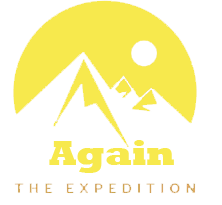Rongai Route on Kilimanjaro
Overview of the Rongai route
The Rongai Route is a less-traveled Kilimanjaro trail with many unique advantages. Starting on the northern slope of the mountain in a coniferous forest, it passes through a variety of climatic zones before descending via the Marangu Route on the southwestern side of Mount Kilimanjaro. Again Expeditions offers guided treks along this route, making it an excellent choice for climbers in 2024.
This route is far less crowded than the southern trails, allowing trekkers to enjoy ten times fewer fellow hikers. It is exceptionally scenic, with stunning views of Mawenzi and Kibo – Kilimanjaro’s volcanic cones – as well as the surrounding Tanzanian landscapes. Along the way, you’ll encounter unique flora such as Kilimanjaro Giant Groundsels and tropical forests on the descent. The drier northern slopes may have sparser vegetation, but there is still much to marvel at. Imagine waking near the majestic peak of Mawenzi, its rocks glowing in the soft light of sunrise, while rare Bearded Vultures soar gracefully across the distant horizon toward Kenya. The Rongai Route provides a more secluded, intimate trekking experience, perfect for those seeking a quieter adventure on Africa’s highest mountain.
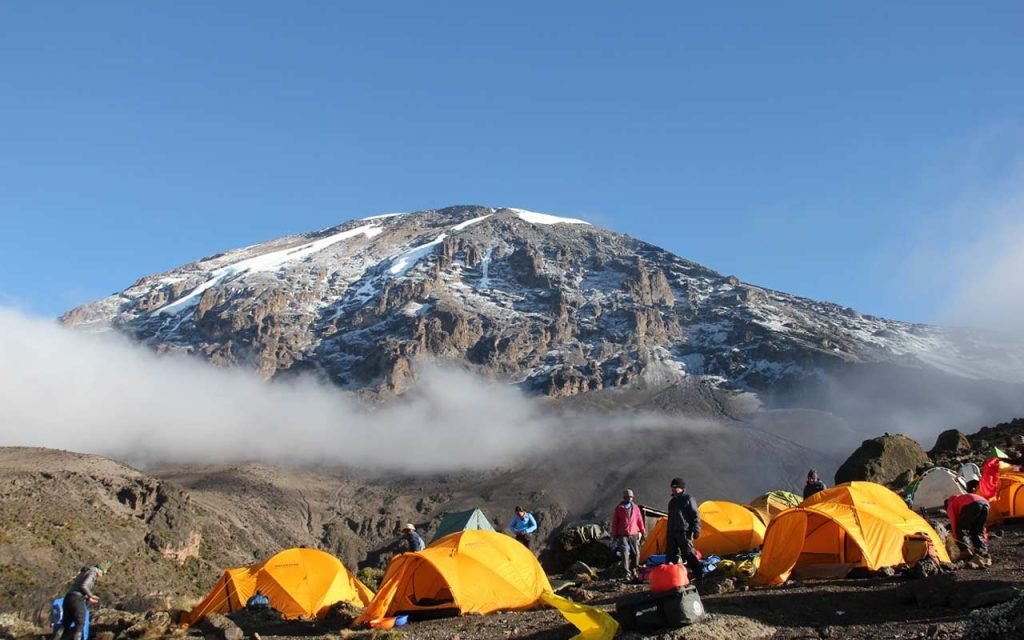
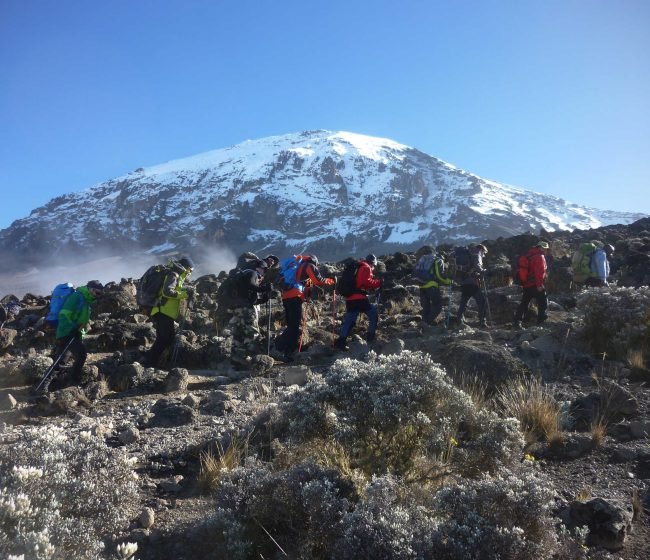
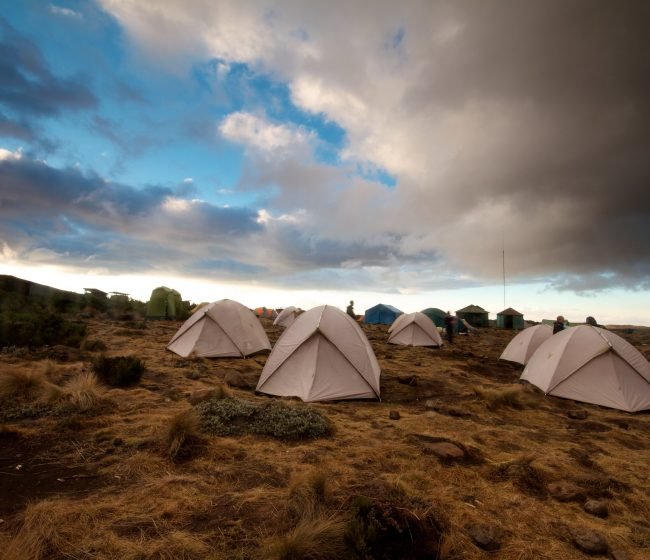
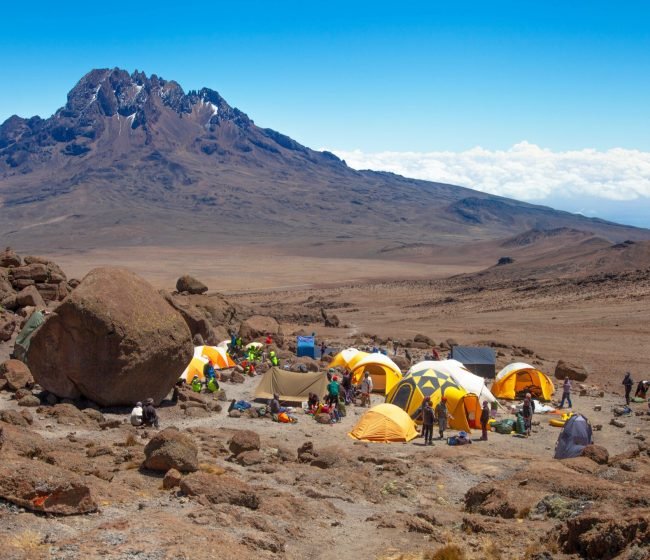
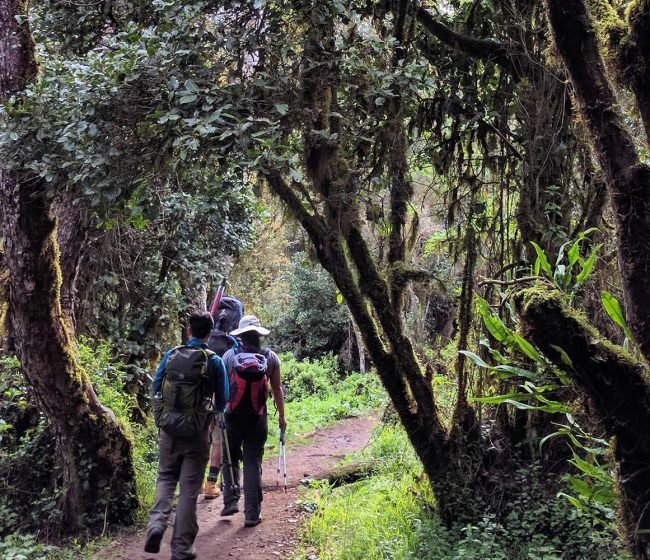
Expert Recommendation
This route is available in 6 and 7-day programs. If you’re a beginner without prior acclimatization, the 7-day itinerary offers a significantly better acclimatization profile. This means that the overall experience will be more comfortable and your chances of summiting will be higher. The 6-day itinerary would be suitable only for those with experience in high-altitude trekking and/or with prior acclimatization.
Rongai Route Detailed Itinerary
Day 1; Arrival
Arrival at Kilimanjaro International Airport (JRO), where you will meet an Again Expeditions representative for your transfer to the hotel included in the package rate. The hotel is well-prepared to ensure a comfortable stay, offering cozy rooms, hot water, attentive staff, a swimming pool, and reliable Internet access. In the evening, you will attend a briefing with our managers, who will go over all details and ensure you are fully prepared for the climb.
Private tour packages include shared airport transfers for your group, while additional individual transfers may incur extra charges. To minimize costs, we recommend coordinating your group’s arrival and departure times.
Day 2; Trekking from Nalemuru gate to Simba Camp
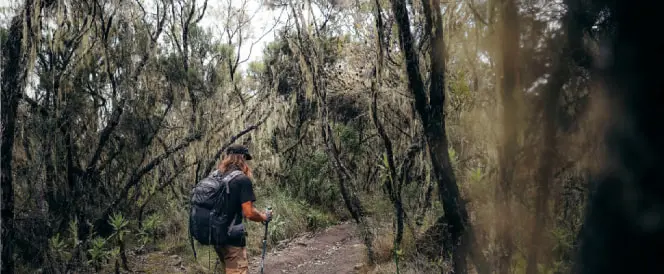
A guide and a mountain support crew will arrive at your hotel in the morning in order to meet you and hold a quick briefing, after which you will travel by vehicle to Kilimanjaro National Park’s northern entrance: Nalemuru Gate (2,020 m /6,627 f). After the quick formality of acquiring climbing permits and registering with the search and rescue service, the group will start trekking up to Simba Camp (2,671 m /8,761 f).. Your trek this day will be moderate and take you through the coniferous forest up Kilimanjaro’s northern slope. Remember not to hurry and always keep a comfortable pace. By the time you reach the camp, our professional mountain crew will have prepared everything necessary, put up tents, and begun preparing dinner.
This will be your first day at this altitude, so it is strongly recommended you heed the following instructions from this point on:
- Drink over 4 liters of bottled water daily (little by little, frequently);
- To help alleviate symptoms of altitude sickness, consider using a preventive measure like a high-altitude aid medicine. Many mountain climbers take such pills in the morning, before they begin their ascent, to reduce discomfort associated with altitude sickness. Our managers will provide more specific details together with your travel itinerary. We recommend consulting your doctor prior to the trip to discuss any potential allergies or health concerns.
It is not uncommon to experience discomfort during the night, high altitude has this effect on the human body. Nausea and headaches are common occurrences in the mountains. However, make sure you alert your guide if you feel any symptoms of altitude sickness.
Day 3; Trekking from Simba camp to Kikilewa Camp
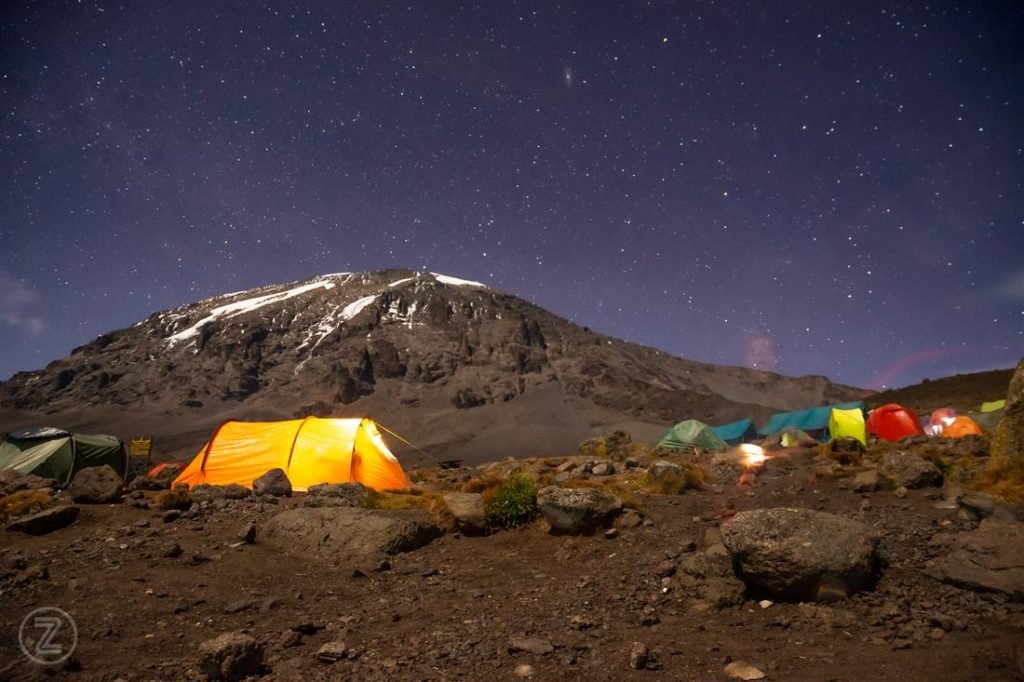
This day starts with an early breakfast and then departure from Simba Camp to the second high-altitude camp: Kikilewa Camp (3,630 m /11,906 f). From Kikilewa Camp you can see Kibo Volcano at its finest, if the weather is clear. This trek is more physically demanding than the previous one, so once you have reached the camp, we recommend getting some rest.
Day 4; Trekking from Kikilewa Camp to Mawenzi Tarn Camp
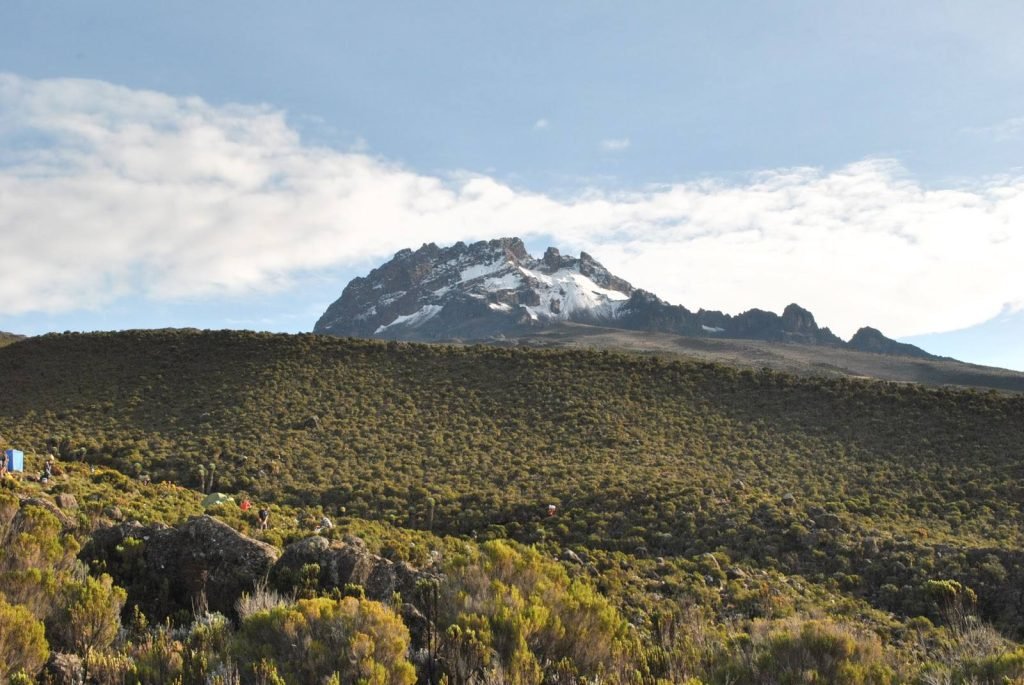
This day starts with another early breakfast and then a trek to Mawenzi Tarn Camp, which is situated at the foot of Mawenzi Volcano, Kilimanjaro’s second-highest point. When you reach the camp, you will have lunch and a two-hour rest, after which there will be an acclimatization hike towards Mawenzi Volcano with a 200 m /656 f) gain in altitude. After, you will hike back down to Mawenzi Tarn Camp, where you will have dinner in the evening.
The acclimatization hike is an easy trek with a slight gain in altitude done in order to speed up the acclimatization process. You should take the acclimatization hikes very seriously. They help increase your chances of successfully summiting Kilimanjaro and save you from the consequences of altitude sickness.
Day 5; Trekking from Mawenzi Tarn Camp to Kibo Hut Camp
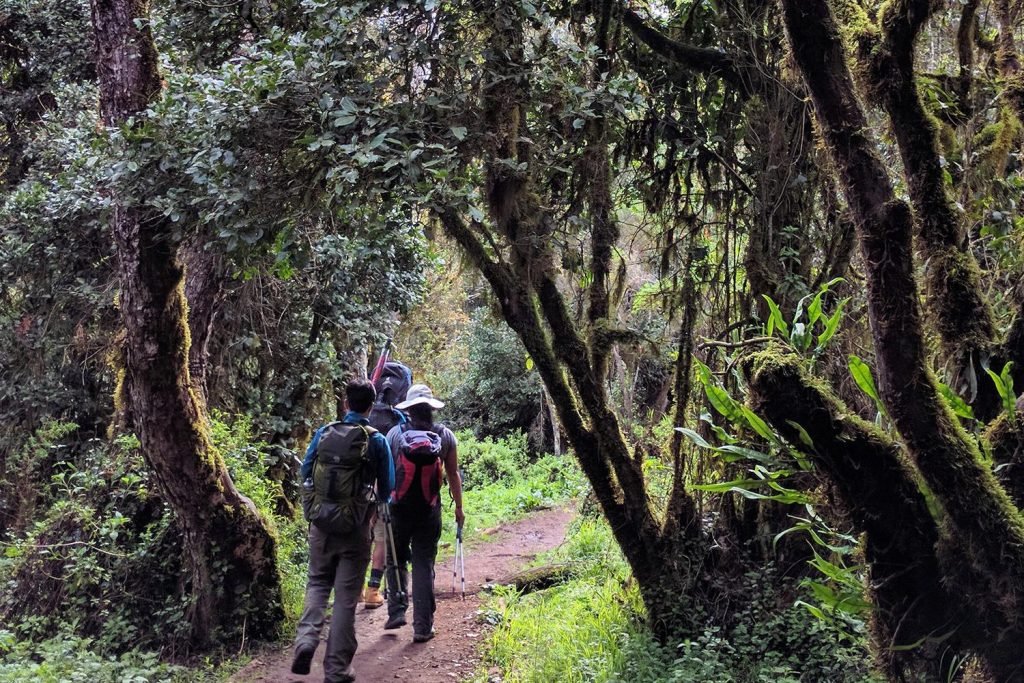
This day will be spent trekking towards Kibo Hut Camp (4,720 m /15,482 f). The landscape will change significantly to become a rocky semi-desert. The actual trek is not very difficult, just remember to stick with an appropriate pace to keep up your strength for the trekking to Kilimanjaro’s summit. When you reach the camp, we recommend you sleep well, avoid strenuous activity, and drink as much as you can, because that very night you will be ascending Uhuru Peak (5,895 m /19,336 f).
Day 6; Trekking to Uhuru Peak and Descent to Horombo Camp
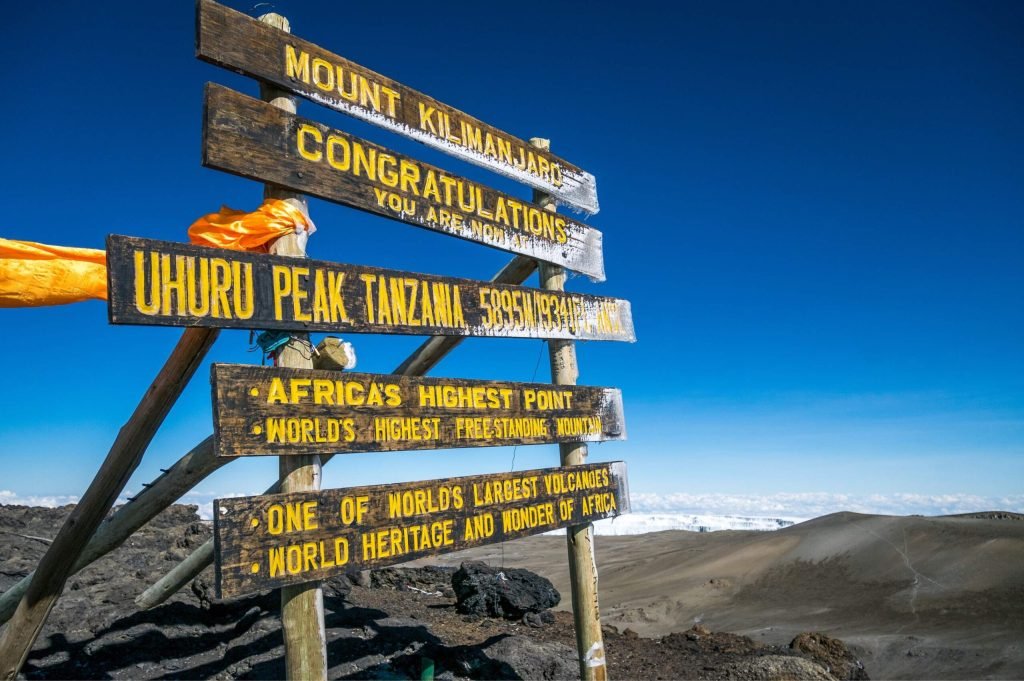
Your group will depart at night from Kibo Hut Camp (4,720 m /15,482 f) and head toward Kilimanjaro’s summit: Uhuru Peak (5,895 m /19,336 f). Technically speaking, the trek is not difficult, however, at this high altitude, even regular physical activity can feel strenuous. Therefore, for the final summit climbers are paired in twos and put under the care of a personal guide, who will closely monitor their physical well-being. After your successful ascent to Uhuru Peak, you can descend to the nearest glacier, if desired. Then you will return to Kibo Camp and after a two-hour rest continue your descent to Horombo Camp (3,720 m /12,202 f).
Don’t forget that 90% of all accidents occur during the descent, including most broken arms and legs. Please pay attention to your feet, as there is a high risk of damaging your toenails.
Day 7; Descent from Horombo Camp to Marangu Gate
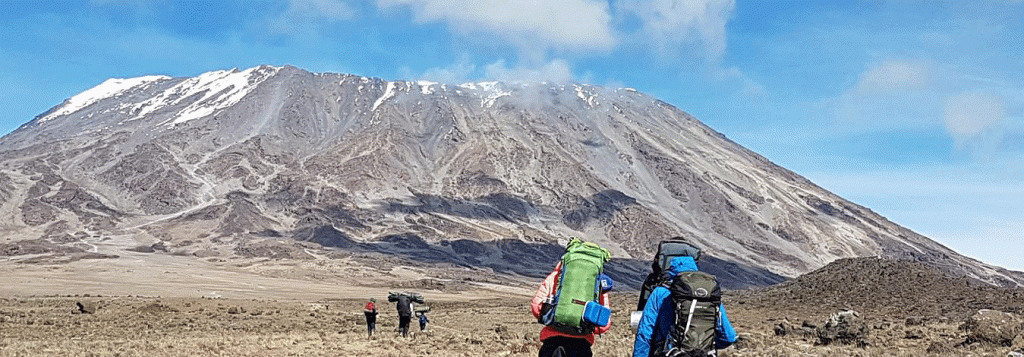
You will be offered a warm breakfast in the morning, after which we will head for the Kilimanjaro National Park’s exit: Marangu Gate (1,970 m /6,462 f). After your descent, the whole group will gather to congratulate you, and then you will have the chance to share your opinions on the trip in the guestbook. Lastly, we will present you with your commemorative certificates and provide you with a transfer back to your hotel.
Day 8; Departure
Rest in the hotel and transfer to the airport.
PLEASE NOTE: Hotel check-out is at 11:00 AM. In case you need a late check-out because of an evening flight, there is the option to extend your hotel stay for an extra fee.
